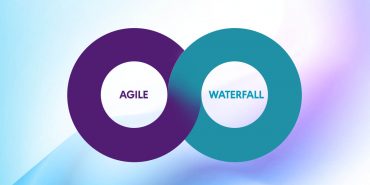Can PRINCE2® be Agile: Strengths, Differences and Synergies
In Part 1 of this series we were introduced to our two contenders: PRINCE2 and AgilePM®.
Part 2 explores the fundamental strengths, differences and synergies of PRINCE2 and AgilePM.
For those working in a PRINCE2 project environment the temptation (and often need) is to develop a “more agile” position on project delivery; for those working in an Agile environment, PRINCE2 and more formal governance structures are often alluded to as “best practice”.
Which way to turn?
Is it possible to integrate these two popular approaches: can the traditional blend with the agile mindset?
7 Strengths of PRINCE2
The classic statement about PRINCE2 is that it can be used as a project management method for any project regardless of sector, industry, size, risk, or complexity. The essence of PRINCE2 is the ability to scale and tailor the method. Key strengths of PRINCE2 include:
- Continued Business Justification. The business case drives the project. If the project is no longer viable, desirable or achievable it should be stopped.
- Project Board. Governance and direction with representation from the business, users and suppliers.
- Management by Exception. This relates to the use of tolerances (delegated authority limits) around time, cost, scope, benefits, risk and quality.
- Focus on Products. Projects are about creating “things” – the pivotal focus is on these products (tangible or intangible) throughout the life of the project.
- Management Stages. Based on the idea of control points and reviews, including review of business justification.
- Work Packages. This concept separates project management from project delivery and is a key linkage when integrating PRINCE2 and Agile.
- Project Assurance. In effect, independent (of the project manager) health checks of the project, focussing on guidance rather than just auditing.
7 Strengths of AgilePM®
AgilePM is also seen as an approach for all projects – not just IT projects. It can be used for business projects without technology components; it can be used equally for projects developing new solutions, as well as enhancements to existing solutions.
AgilePM key strengths include:
- Atern Principles. Focussing on business need, on-time delivery, collaboration, never compromising quality, build incrementally, develop iteratively, communicate continuously and demonstrate control.
- Fixed time, cost and quality /variable is features. This means that an AgilePM project will always deliver a viable solution – a minimum sub-set of features is guaranteed to be delivered on time and budget.
- Iterative development. The value add is to converge on a more accurate solution by communicating and checking the current level of understanding.
- Incremental delivery. Partial deliveries of the final product are made as early as possible if they are a benefit to the business – encouraging feedback, early ROI and a “better” final product.
- Facilitated management style. AgilePM is about empowering the team – the project manager needs to facilitate as opposed to “command and control”.
- Priorisation. Understanding the relative importance is vital in terms of progress and keeping to deadlines. MoSCoW (must have, should have, could have, won’t have this time) is a key technique.
- Timeboxing. A hallmark of agile, relating to on-time delivery. A timebox is a period of time, at the end of which an objective (eg deliverable) has been met.
PRINCE2 and AgilePM Differences
The significant difference between the two approaches can be summarised as:
- PRINCE2 focuses on project management only. AgilePM addresses project management and project delivery
The ideal then is to look at integrating the two methods, covering the management and delivery of a project, with the option to execute using agile techniques.
7 PRINCE2 Agile Synergies
So should we try to integrate PRINCE2 and AgilePM? Is there a need? Is there value-add?
The simple answer in the marketplace currently is yes: yes it appears that there is a strong interest in the concept of agile projects whilst maintaining best practice project management. Under this approach, PRINCE2 becomes the foundation for project governance and management; AgilePM focuses on product delivery.
Key integration aspects include:
- Alignment of Decision-Making Roles. Executive = Business Sponsor, Senior User = Business Visionary, Senior Supplier = Technical Co-ordinator
- Team Structures for Product Delivery. Integrating AgilePM’s Solution Development Team enables projects to be run in a more agile way.
- Scope Tolerance. (As opposed to standard PRINCE2 cost, time and quality tolerance). Agile is being responsive to the features being delivered.
- Apply MoSCoW. By prioritising needs, focus is maintained on what really is important to the business.
- Timebox. The PRINCE2 process of Managing Product Delivery and the use of work packages synergises with the Agile timeboxing technique.
- Apply Facilitation. Facilitated workshops are a powerful tool that can be used throughout the project lifecycle – including planning, design, quality reviews, project reviews to lessons learned.
- Introduce Iteration. The approach moves from the traditional predictive culture to a convergent one. Iteration promotes investigation and clarification.
So PRINCE2 and Agile?
Is it possible to integrate these two leading approaches to achieve project success? In effect, success becomes a question of understanding, attitude and culture; empowerment, collaboration and appropriate governance is the foundation for success. The project team and the enterprise itself must be supportive of a balanced project management environment – being agile but not too informal, being structured with appropriate rigour, but not too rigid.
Meanwhile, AXELOS has confirmed the release of PRINCE2 Agile this year, stating:
“We believe the concepts in PRINCE2 and agile are complementary, mutually supportive and should be part of the skills toolkit for professionals responsible for both project management and agile delivery.”
Product Development Manager, AXELOS
PRINCE2 is a registered trade mark of AXELOS Limited. AgilePM is a registered trademark of Dynamic Systems Development Method Limited





